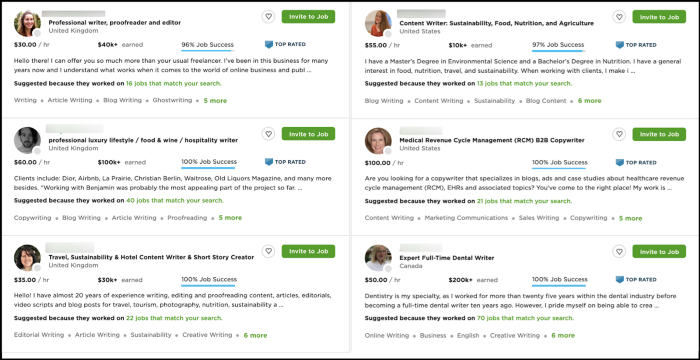Numbers are starting to roll in on how freelancers have adapted during the pandemic, and the data is more promising than expected.
Nearly 60 million Americans freelanced last year, and 75% of freelancers say they earn more than they did at their 9-to-5, according to the U.S.-based Freelance Forward 2020 report commissioned by freelancer platform Upwork.
There’s a saying in business—“The premium you charge is the value you create”—but it helps to have at least an idea of an appropriate, worthwhile starting range. As someone who’s freelanced for years and also hires freelancers often, I’ve made plenty of mistakes along the way.
Here's what to consider when setting your rates.
Table of Contents
No. 1: Figure Out Your “Happy Price”
I’ve written before about this essay in Forbes from contributor Michael Ellsworth about finding your “happy price”. Your happy price is the price point at which your energy shifts from “not worth it” to “Yeah, I would happily do that”.
Don’t be cheeky: A million bucks would obviously be a happy price for all of us! Your happy price tends to rise with experience.
When you charge your happy price, you protect yourself from becoming resentful or burnt out about the work there is to do, which is key. Take some time to really determine what this happy price is, especially if your freelance pursuits are as a side hustle at first.
Related: How to Write for Forbes
No. 2: Research Freelancer Forums
If you still feel completely in the dark, go look at what others are charging in your field. I like Upwork because it has a wide variety of freelancers, from side hustlers just getting started to agencies and high-end professionals who use the platform to source potential new clients.

Screenshot from the author. Various results from search term “blog writer”.
As you do research, look for subtle differences between the profiles of freelancers who have higher rates versus lower rates. Here are some questions I like to ask myself:
- What language do they use to project authority?
- How do they showcase being a professional?
- Do they specialize in certain fields?
These clues will help you discern what it takes to be at or near the top of your field with regard to rates. You’ll also get some great ideas on how to position yourself.
No. 3: Use Lifestyle Goals to Calculate Your Hourly Rate
A third approach is to take a personal finance angle: Define the salary you want, then reverse engineer your hourly rate. A tried-and-true formula to identify your hourly freelance rate is to take your desired salary and divide it by 2,000 hours/year (This accounts for two weeks of paid time off). Be sure to budget for taxes and any expenses.
If you’re a writer and you’re producing actual content for your clients, I recommend you avoid quoting this hourly rate to prospective clients. Instead, quote a package price or project price. To find your package price, add up the number of hours you expect the project to take.
Quoting your services as a package or project allows you to highlight the transformation you are promising your clients, and customers buy transformations. Also, how long it takes you to write an article is none of your client’s business; since they’re paying for a finished product, quote your rates accordingly.
How to Ethically Raise Your Rates
Over time, it will be appropriate to incrementally raise your rates. There are a few reasons for this:
- Your services become more refined.
- You gain more experience.
- You gain more education.
- Your offers become bigger or more involved.
The Math:If you were to raise your rates by just 10% every 60 days, your rates would double in just 18 months.
Should you raise your rates with existing clients? It’s up to you. You can choose to grandfather existing clients into their old rates. If you want to move your clients into new rates, a good way to position this is that you’re not increasing your rates; you’re adjusting them based on the new resources, experience, and insights you bring to the table.
Final Takeaways
Charging money for what you love to do can be scary at first, but it doesn’t have to be a total shot in the dark.
Do some research, define your happy price, and define how your services help create a transformation for people, and you’ll be well on your way to living a more fulfilled freelancer life. ⬥
Thanks For Reading 🙏🏼
Keep up the momentum with one or more of these next steps:
📣 Share this post with your network or a friend. Sharing helps spread the word, and posts are formatted to be both easy to read and easy to curate – you'll look savvy and informed.
📲 Hang out with me on another platform. I'm active on Medium, Instagram, and LinkedIn – if you're on any of those, say hello.
📬 Sign up for my free email list. This is where my best, most exclusive and most valuable content gets published. Use any of the signup boxes on the site.
🏕 Up your writing game: Camp Wordsmith® is a content marketing strategy program for small business owners, service providers, and online professionals. Learn more here.
📊 Hire me for consulting. I provide 1-on-1 consultations through my company, Hefty Media Group. We're a certified diversity supplier with the National Gay & Lesbian Chamber of Commerce. Learn more here.


